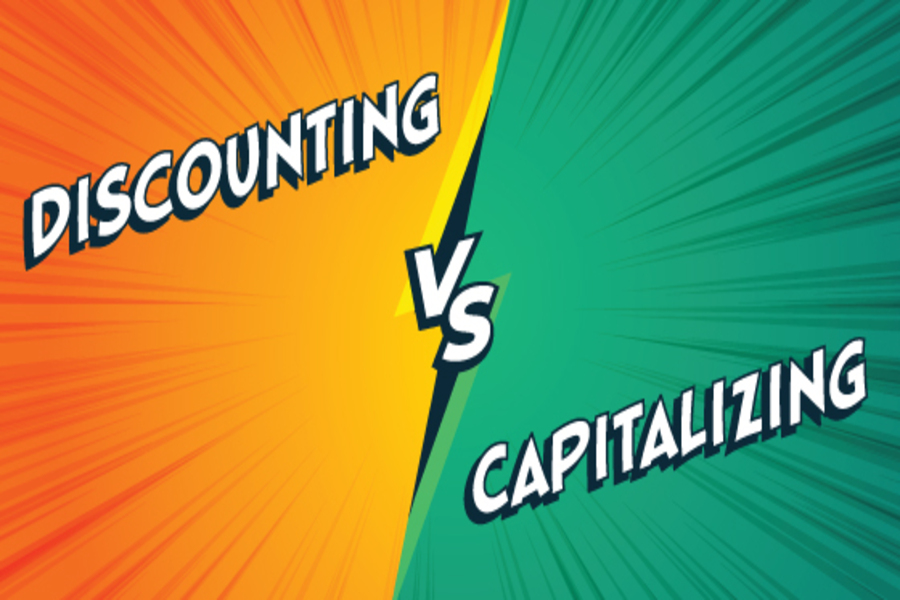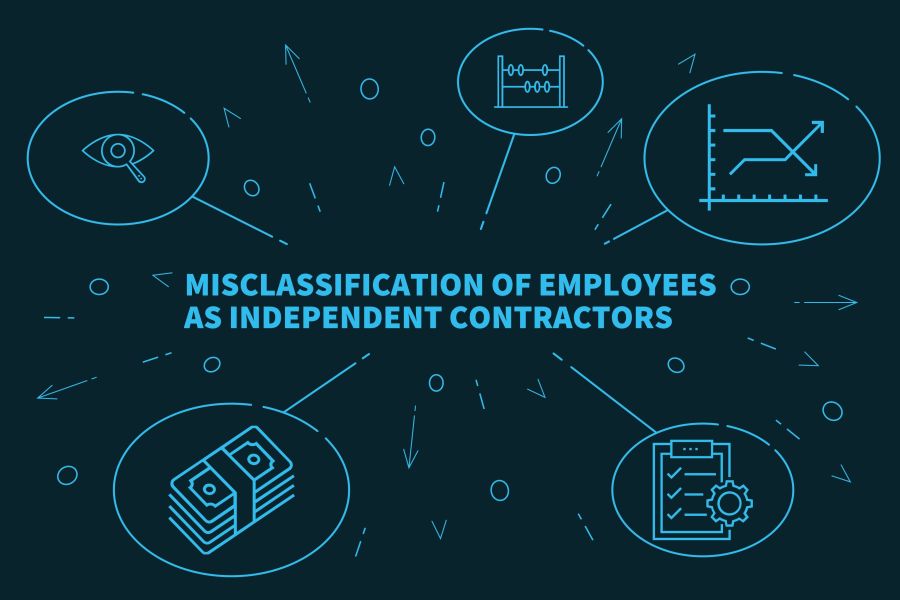Two techniques fall under the income approach umbrella when valuing a private business interest: the discounted cash flow (DCF) method and the capitalization of earnings method. How do these two commonly used methods compare — and which one is appropriate for a specific investment? Fundamentals of discounting The DCF method estimates the present value of future expected net cash flows using a discount rate. It entails these basic steps: Compute future cash flows. Potential investors are generally trying to determine what’s in it for them in terms of cash flow and an acceptable return on investment. Historical earnings are often the starting point for estimating expected cash flow over a discrete discounting period of, say, five or seven years. Then, the valuation expert calculates a terminal (or residual)...

On January 10, 2023, IRS news release IR-2023-03 announced that California storm victims now have until May 15, 2023, to file various federal individual and business tax returns and make tax payments. The IRS is offering relief to any area designated by the Federal Emergency Management Agency (FEMA). This means that individuals and households that reside or have a business in Alameda, Colusa, Contra Costa, El Dorado, Fresno, Glenn, Humboldt, Kings, Lake, Los Angeles, Madera, Marin, Mariposa, Mendocino, Merced, Mono, Monterey, Napa, Orange, Placer, Riverside, Sacramento, San Benito, San Bernardino, San Diego, San Francisco, San Joaquin, San Luis Obispo, San Mateo, Santa Barbara, Santa Clara, Santa Cruz, Solano, Sonoma, Stanislaus, Sutter, Tehama, Tulare, Ventura, Yolo and Yuba counties qualify for tax relief. On January 11, 2023, the...
The Clean Vehicle Credit, brought to you by the Inflation Reduction Act of 2022 (IRA '22), is the successor to the New Qualified Plug-in Electric Drive Motor Vehicle Credit. The credit generally applies to vehicles having at least 4 wheels that are placed in service from 1/1/2023 - 12/31/2032. This post is broken down into the following sections: Credits for New Clean Vehicles Purchased in 2023 or After Credits for New Plug-in EVs Purchased before 2023 Used Clean Vehicle Credit Commercial Clean Vehicle Credit CREDITS FOR NEW CLEAN VEHICLES PURCHASED IN 2023 OR AFTER If you buy a new plug-in electric vehicle (EV) or fuel cell vehicle (FCV) in 2023 or after, you may qualify for a clean vehicle tax credit. Who Qualifies You may qualify for a credit...
If you’re considering converting your C corporation to an S corporation, be aware that there may be tax implications if you’ve been using the last in, first out (LIFO) inventory method. That’s because of the LIFO recapture income that will be triggered by converting to S corporation status. Consider computing in advance what the tax on this recapture would be and to see what planning steps might be taken to minimize it. Inventory reporting As you’re aware, your corporation has been reporting a lower amount of taxable income under LIFO than it would have under the first in, first out (FIFO) method. The reason: The inventory taken into account in calculating the cost of goods sold under LIFO reflects current costs, which are usually higher. This benefit of...
When valuing a business, recent market volatility may well translate into higher discounts for lack of marketability (DLOM) because investors generally will pay less for illiquid, risky investments. However, there’s a silver lining to economic uncertainty: It provides an opportunity for wealthy individuals to gift private business interests at significant discounts, potentially saving a substantial amount in taxes. DLOM basics Marketability is the ability to quickly or readily convert property to cash at minimal cost, according to the International Valuation Glossary — Business Valuation. Also implied is a high degree of certainty that an expected selling price will be realized. The two most popular sources of empirical data valuators use to support DLOMs are restricted stock and pre-initial public offering (IPO) studies. These studies suggest that discounts for...
As posted to IRS.gov as Tax Tip 2022-117 on 8/2/2022 A business might pay an independent contractor and an employee for the same or similar work, but there are key legal differences between the two. It is critical for business owners to correctly determine whether the people providing services are employees or independent contractors. An employee is generally considered anyone who performs services, if the business can control what will be done and how it will be done. What matters is that the business has the right to control the details of how the worker's services are performed. Independent contractors are normally people in an independent trade, business or profession in which they offer their services to the public. Independent contractor vs. employee Whether a worker is an independent...
As posted to the Bellavia Blatt YouTube Channel on 11/18/22, and the Fixed Ops Roundtable YouTube Channel on 11/18/22 (Run Time: 14 min, 59 sec) As EVs continue to represent a greater percentage of total new vehicle sales, ongoing challenges continue to present themselves forcing automobile dealers to combat the continued erosion of their profits. In this clip, automotive attorney Len Bellavia sits down virtually with Ted Ings at the "Fixed Ops Roundtable" to discuss a number of current issues impacting dealers. On the subject of over-the-air (OTA) updates, Len reports that GM and Stellantis have announced that the transition to OTAs will cost manufacturers $25 billion per year in lost revenues which will be "coming out of the hides of the fixed ops department of these dealerships". ...
The Great Transformation (Part 2) - The Disruption of Transportation As posted to the Tony Seba YouTube Channel on 10/31/2022 (Run Time 18 min, 23 sec) Part 2 of Tony Seba’s latest presentation on what he calls "The Great Transformation", discusses the disruption of transportation by autonomous, electric, fleet vehicles: Transportation as a Service. "The Great Transformation" is a deep dive into the key technologies that are converging in the 2020s and how they will disrupt the five foundational sectors of the economy: Information, Food, Energy, Transportation and Materials. Seba’s work focuses on the complex patterns and dynamics of change, disruption, and transformation at all scales. He is the author of Clean Disruption of Energy and Transportation, and co-author of Rethinking Humanity. The rest of the presentation can be seen here: The...
Businesses can provide benefits to employees that don’t cost them much or anything at all. However, in some cases, employees may have to pay tax on the value of these benefits. Here are examples of two types of benefits which employees generally can exclude from income: A no-additional-cost benefit. This involves a service provided to employees that doesn’t impose any substantial additional cost on the employer. These services often occur in industries with excess capacity. For example, a hotel might allow employees to stay in vacant rooms or a golf course may allow employees to play during slow times. A de minimis fringe benefit. This includes property or a service, provided infrequently by an employer to employees, with a value so small that accounting for it...
In most companies, employees need a user identity to access work-related hardware and software. Privileges to use certain applications or open certain files usually are provided to workers based on their department, role and level of authority. Over their tenure, employees might accumulate various privileges they no longer need. For example, someone who once worked in accounting might retain the ability to make journal entries even after transferring to the legal department. Unfortunately, dishonest employees could use their privileges for nefarious purposes. Best practices Privileged users sometimes use their access to perpetrate fraud, intellectual property theft or sabotage. And they don’t always act alone. Third parties, such as competitors, could try to recruit privileged users to steal trade secrets. Or employees could collude with hackers to compromise...











